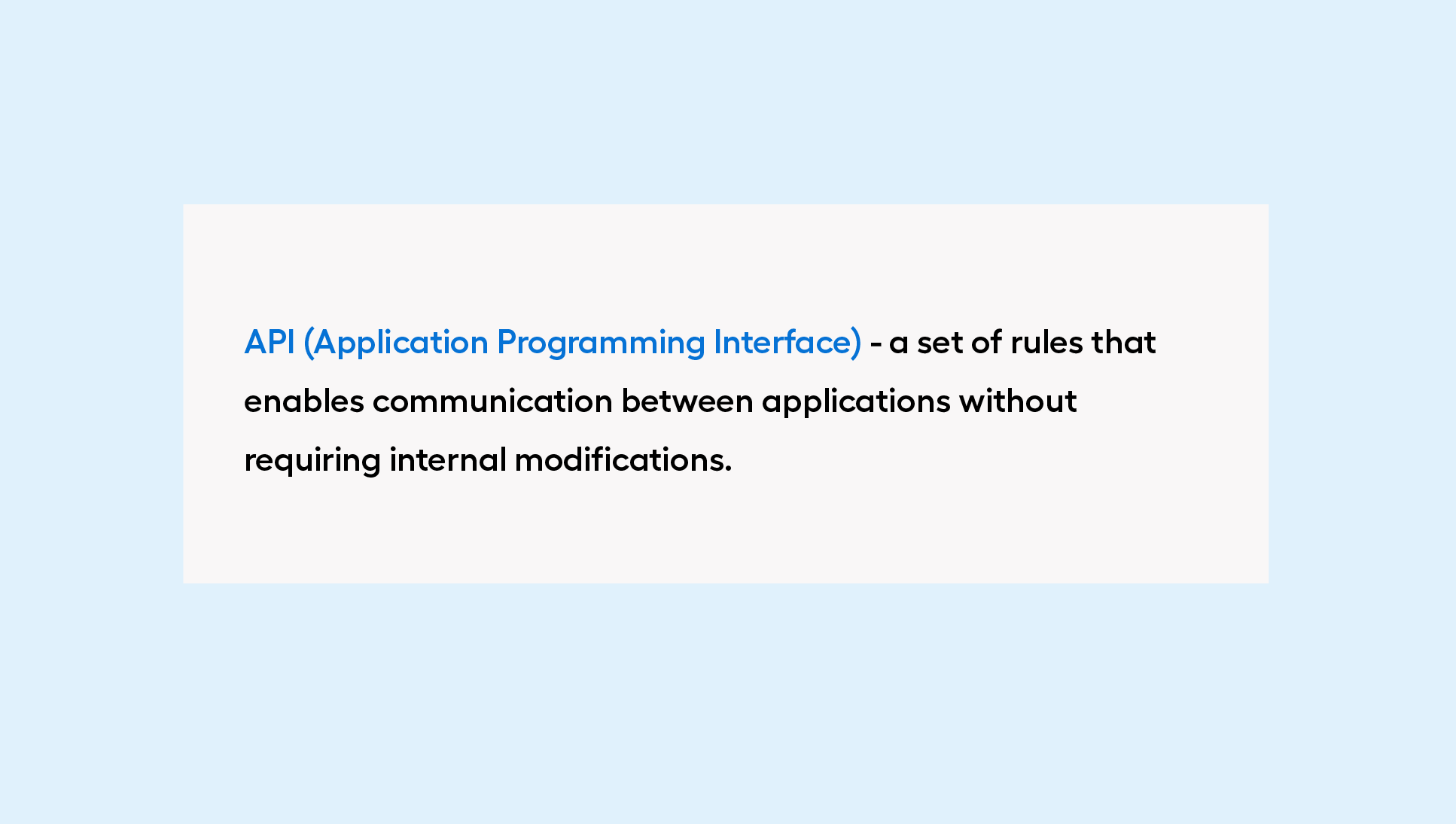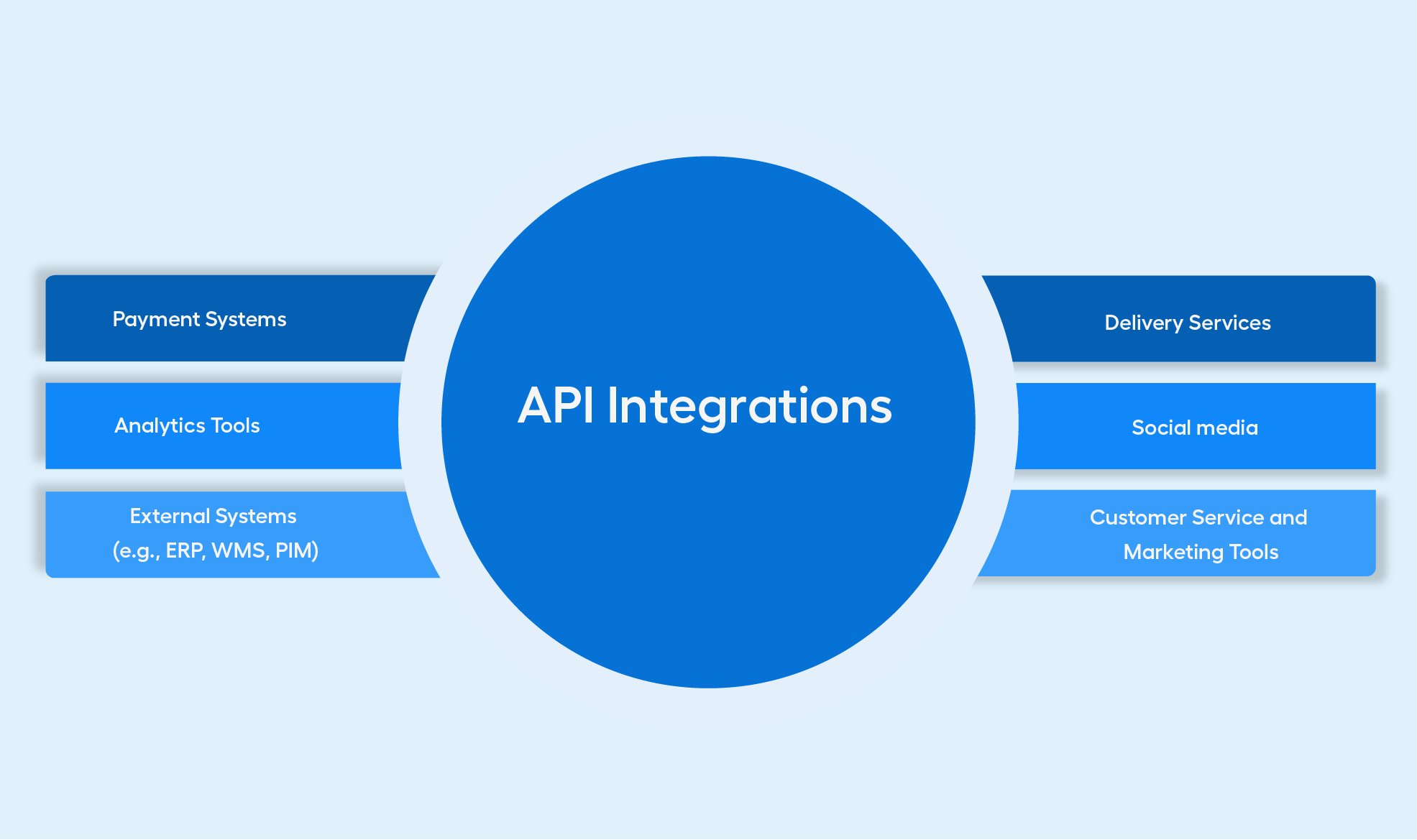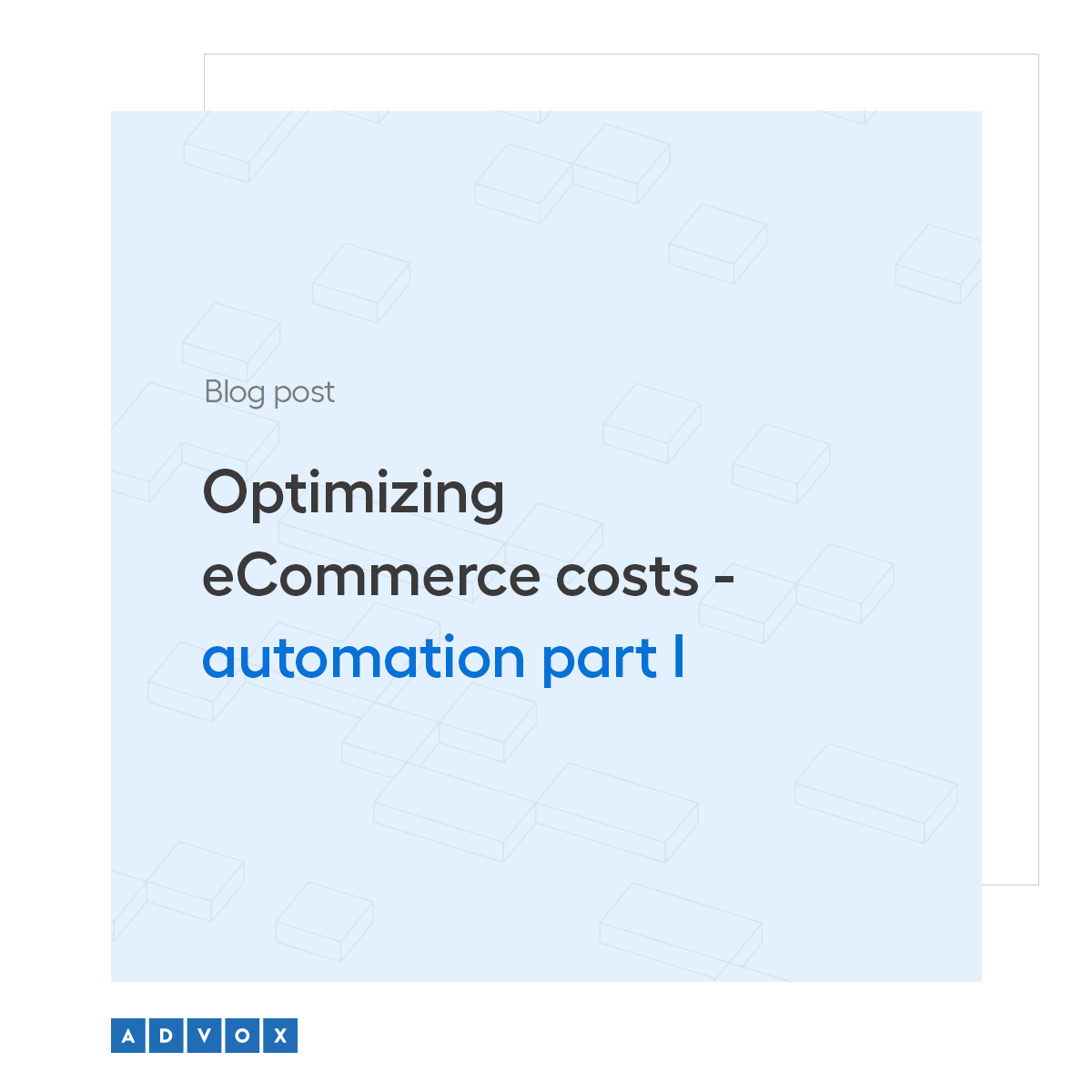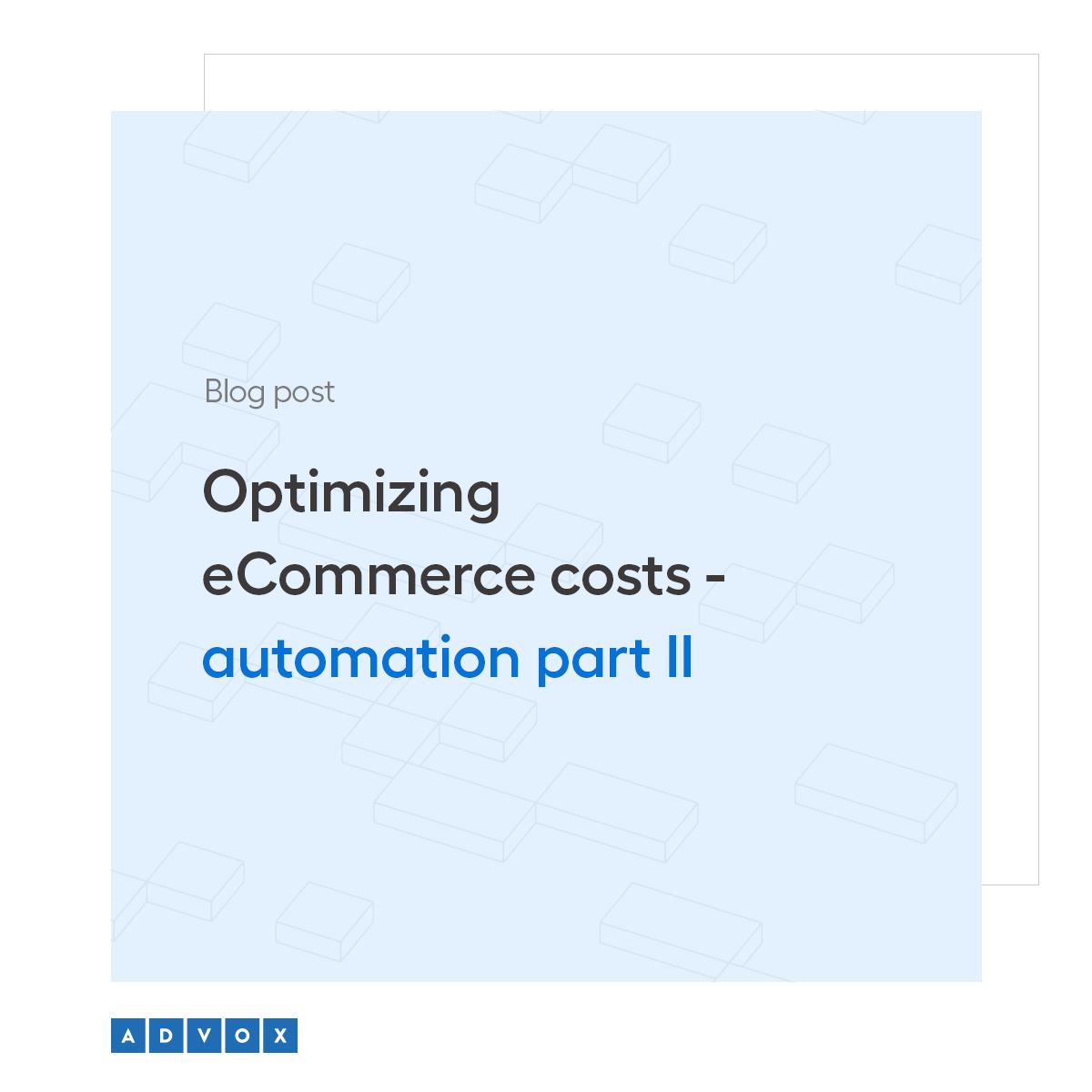Table of contents
- What is an API?
- How does an API work?
- Types of APIs
- What are APIs used for?
- How Does Magento Work with APIs?
- Benefits of API-First - why choose this approach?
- API integrations - a key step in the growth of your eCommerce
Today's online stores are much more than just a single sales platform. More and more often, they are complex environments that integrate various systems - from additional payment methods and chatbots supporting customer service to advanced systems for managing thousands of products (e.g., Pimcore). Attempting to combine all these elements within a single structure would not only be extremely time-consuming and costly but could also overwhelm the platform. This could lead to decreased performance, slower website operation, and ultimately, customer frustration.
So how can you effectively integrate various systems without risking these issues? The answer is API integrations, which allow for efficient and flexible connections between different solutions without overburdening the main store platform. Want to learn more about using APIs in eCommerce? Read this article!
What is an API?
API, or Application Programming Interface, is a term that appears in many contexts, especially when it comes to the eCommerce industry. If you search for it online, you'll find a variety of solutions provided by Amazon, Google, and other well-known companies. But what exactly does this acronym mean? First and foremost, it’s important to understand that an API is a concept, not a ready-made tool.
An API is a set of rules that allows communication between different applications. Simply put, an API acts as a "translator" between one system and another. It facilitates the exchange of information, commands, and queries between different applications, allowing them to work together. Through APIs, one application can use the functions or data of another without the need for internal modifications or direct connections between them. This way, different systems - such as an online store, a warehouse system, or payment tools - can work seamlessly together, streamlining business processes.

How does an API work?
From payment systems like PayPal or PayPo, through integration with social platforms like Facebook and Instagram, to data analysis tools like Google Analytics—each of these services uses an API to enable the exchange of data and functionality between different applications. How an API works depends on its design and the goals it aims to fulfill. However, there are two basic approaches to designing APIs: synchronous and asynchronous.
In the synchronous approach, two applications exchange data in real time. This means that when one application, such as an online store, sends a query about inventory status, the other application, the WMS inventory system, immediately updates the data and returns it. This approach is ideal in situations where an immediate response is required.
On the other hand, the asynchronous approach allows queries to be sent without waiting for an immediate response. An example might be processing large amounts of data, such as sending order confirmations to customers. In this model, the application can handle other tasks while the response to the query is processed in the background.
The operation of an API can be simplified into four key stages that ensure smooth information exchange between systems:
- Request: an application sends a request to the API of another application. The request might concern checking product availability, processing a payment, or generating a shipping label.
- Processing the request: the API receives the request and translates it into a format understandable for the other application, allowing it to process the data correctly.
- Response: after processing the request, the system sends a response through the API containing the result of the query.
- Data update: the application that receives the response updates its data, such as changing the order status or informing the customer about the progress.
Types of APIs
The deeper you dive into the technical aspects of APIs, the more you’ll realize how complex this topic is and how many different types of APIs exist. They can be divided into several categories based on different criteria:
Communication Method
First, APIs differ in how they transmit information between applications. In this case, the most common types are REST APIs, SOAP APIs, RPC APIs, and GraphQL. Each of these API types uses a different communication protocol, which is the method by which data is exchanged between systems.
Data Format
APIs can also differ in the data format they operate on. The most popular are JSON APIs, which use the lightweight and easy-to-read JSON format, and XML APIs, which are more complex but offer greater flexibility in defining data structures.
Availability and Purpose
APIs can also be divided based on their target audience. Internal APIs are created for use within an organization and serve to connect its internal systems. Public APIs, on the other hand, are made available to external developers so they can use the functions or data provided by the application creators. Examples include APIs provided by companies like Google or Facebook.
Target Application Type
Another criterion for dividing APIs is the type of application for which they are created. Web APIs are designed to work with web applications running in browsers. Mobile APIs serve mobile applications that run on smartphones and tablets, while Desktop APIs are intended for applications running on desktop computers.
These are not the only categories by which APIs can be classified. Depending on project needs, APIs can be classified according to other criteria, such as the method of authorization or mode of operation. Each type of API serves a specific function, and their selection depends on the type of integration and data exchange needed in a given project.
What are APIs used for?
APIs play a key role in eCommerce, being used in both smaller tools and more complex systems. Thanks to APIs, it is possible to connect many crucial elements of an online store, which simplifies and automates many business processes. The most common uses of APIs in eCommerce include:
- Payment systems - APIs enable integration of an online store with external payment service providers like PayPal or Klarna (as well as various shipping options). This makes the payment processing fast, secure, and automatic. APIs also allow for automatic sending of payment confirmations and order status updates, improving convenience for customers.
- Customer service tools - APIs allow integration with customer service tools, such as chatbots, newsletter systems (e.g., Mailchimp), or customer relationship management platforms.
- Social media integration - thanks to APIs, eCommerce platforms can also be integrated with social media, such as Facebook, Instagram, or X (formerly Twitter).
- Analytics tools - APIs can be used to integrate with analytics systems like Google Analytics. This gives online store owners insight into data related to sales, customer behaviour, and marketing campaign effectiveness. Automatically transferring data between the store and analytics tools allows for real-time reporting and analysis of key metrics.

How Does Magento Work with APIs?
Wondering if you can easily create API integrations for your sales platform? If you have a store on the Magento platform (now Adobe Commerce), you don't need to worry. Magento has a very extensive and well-documented REST API and GraphQL, making it ideal for integration with various systems and applications. These APIs enable seamless data exchange between Magento and other platforms, significantly increasing the flexibility of the entire eCommerce ecosystem.
Moreover, Magento offers many official integrations with various systems, such as shipping management, order and inventory management, Marketing Automation, CRM, and ERP. This allows Magento to be highly customizable, making it an excellent tool for companies that need a comprehensive solution to manage their eCommerce operations. Such integrations allow for quicker responses to changing market conditions, better customer relationship management, and more efficient planning and execution of marketing activities.
Benefits of API-First - why choose this approach?
Imagine a new payment option entering the market that quickly gains popularity. Thanks to an API, you can integrate it with your online store relatively quickly, staying ahead of the competition and satisfying your customers. And that's just the beginning of the benefits of using APIs. In the eCommerce world, where continuous process improvement and integration of new tools are key, the API-first approach allows for quick adaptation to changing market needs. Why else should you choose this approach?
- Facilitates collaboration between different systems - API-first makes it possible for various systems and tools to work together seamlessly, even if they come from different providers or were designed with different technologies. For instance, a warehouse management system (WMS), a payment platform, and a customer relationship management (CRM) tool can easily be connected via APIs. This approach eliminates the need for manual data transfers, minimising errors and improving day-to-day system interactions.
- Scalability and flexibility - as your business grows and your customer base increases, systems built on APIs can easily be expanded with new features and integrations without the need to overhaul the existing infrastructure.
- Streamlining processes - APIs are often used to automate time-consuming tasks and optimise key business processes. Integrating data from different sources makes it easier to analyse and manage. As a result, this approach saves time and money while increasing efficiency and reducing the risk of errors associated with manual data entry.
- Security- A well-implemented API-first approach can significantly enhance system security. Well-designed APIs include authorization and authentication mechanisms that control access to data and application functions. This means that only authorised applications and users have access to the resources provided by the API, minimising the risk of security breaches.
API integrations - a key step in the growth of your eCommerce
In the eCommerce industry, where speed and efficiency are crucial, APIs are an investment that gives online stores a competitive edge and opens the door to new growth opportunities. Using APIs in business allows for the simplification and automation of many processes, leading to significant time and resource savings. APIs also provide greater flexibility, enabling easy integration of new systems, features, or tools without the need for costly infrastructure overhauls.
Moreover, APIs significantly enhance user experience by enabling faster responses to customer needs and seamless integration with modern technologies such as chatbots, payment systems, marketing tools, and analytics. The benefits of an API-first approach - such as better system collaboration, scalability, and enhanced security - make APIs an essential tool for any eCommerce business that wants to operate efficiently, stay modern, and grow in line with market trends.
Thinking of using APIs in your eCommerce? Contact us, and we’ll help you implement solutions that meet your needs.







